
The Code for America Puerto Rico “Coqui Coders” team. From left: Maksim Pecherskiy, Ainsley Wagoner, Giancarlo Gonzalez, Clara Gonzalez Sueyro
Code for America partners with a small number of local governments each year to develop innovative digital approaches to delivering key public services across health, economic development, safety, and justice. Each year they also invite experienced technologists who want to apply their skills for the public good into the fellowship program. The fellows are grouped into teams of three (developer, designer, researcher) and enter a year-long partnership with a local government to develop digital tools that help governments deliver key services.
In 2014 I was privileged to receive a Code for America fellowship. My team of three was partnered with the territory of Puerto Rico. We spent the month of January preparing for a one month research visit in February. We chose the name “Coqui Coders” after Puerto Rico’s famous frog.
We arrived to Puerto Rico with a few ideas in mind and lots of expectations. The first barrier for our team was the language. Although almost every citizen speak English fluently, the language used daily by most people is Spanish. Fortunately, I am a native Spanish speaker and I was able to serve as my team’s translator, social connector, and language tutor.
The most important challenge we faced was the scope of the project. Our city partners in Puerto Rico had selected Economic Development as our area of focus. This presented a significant challenge as even understanding the context is a complex endeavor. The following are some of the most difficult challenges facing Puerto Rico:
1. Crushing Debt: Over $70 Billion, which was downgraded to junk status the second day after we had arrived.
2. Brain Drain: It is not very common for ambitious Puerto Ricans to remain in the territory. Today, over 3.7 million Puerto Ricans live in the mainland United States. This number surpasses the number of native Puerto Ricans living on the island itself.
3. Complex Legal System: The legal system is an adopted mixture of Spanish, United States, and unique Puerto Rican laws and regulations.
4. Complex Organizational Structure: 78 separate and overlapping municipalities govern the island.
5. Unemployment: Puerto Rico in the year of 2014 had reported a 15% unemployment rate.
During our first month in Puerto Rico we worked to gain an understanding of the context around Economic Development. Puerto Rico has many agencies working under the umbrella of Economic Development and it was necessary to understand how each agency worked on an individual level, and how they worked together in an overall structure.
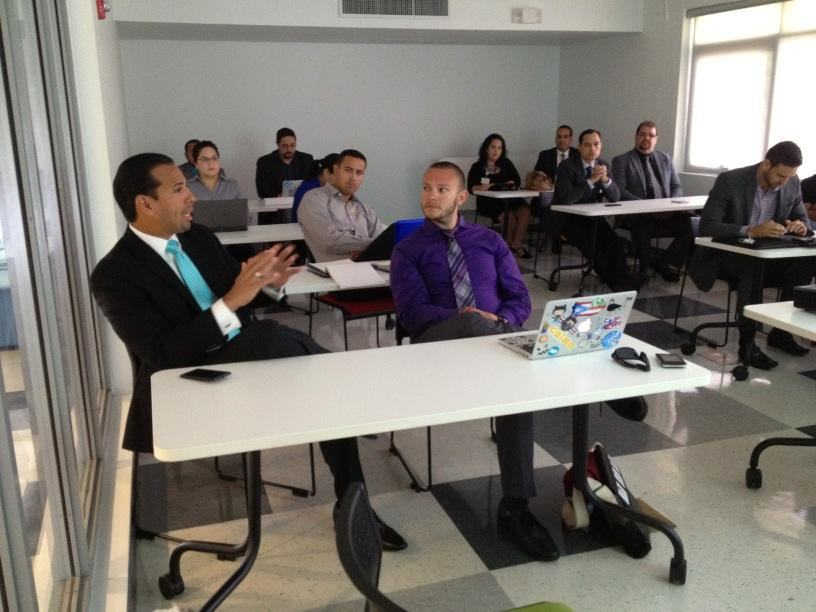
Maksim Pecherskiy and Joe Cancel speaking at a meeting in San Juan
Together our team performed and recorded more than 80 in-depth interviews. We made sure that these interviews captured the knowledge of people at many levels of hierarchy in each agency, from the top to the bottom. We also interviewed and met with representatives of the business community. After each interview we worked to synthesize the information we were gathering to ensure it would be useful after we had forgotten the contents of a particular interview. We would later use this knowledge to make decisions about how to proceed, making references to it throughout the fellowship year.

Interviewing small business owners. From left: Maria Sanchez, Paula Vasquez, Clara Gonzalez Sueyro
It did not take long to discover that the agencies are not well integrated with each other. This creates difficult situation for people working inside the agencies, as well as people interacting with these agencies externally. The many roles, responsibilities, information systems, paperwork and technologies come together in a way that multiplies their complexity.
We found that Puerto Rico has over 50 business incentives designed to encourage business owners and entrepreneurs to stay, invest, and grow in Puerto Rico. Although the incentives themselves were appealing, the business community was generally not well informed about them. If they were informed, they generally remained confused about how to take advantage of them.

The intense research we performed during February provided us with enough contextual knowledge to move forward with confidence. We were able to find a specific and strategic pressure point on which we could focus our efforts. This was most important because we didn’t have much time and we needed to choose a project we could feasibly complete within our fellowship timeframe.
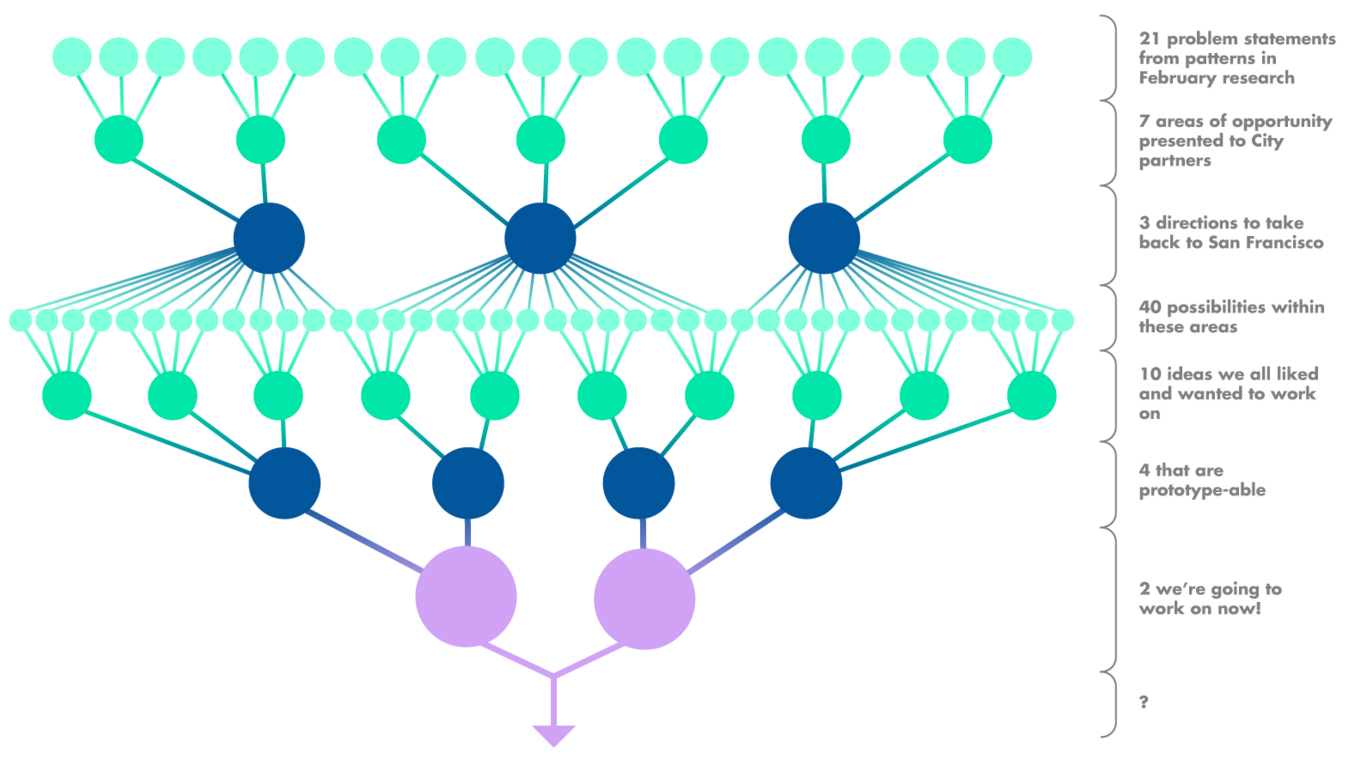
Together with our stakeholders, we decided to focus on Puerto Rico’s incentives for small businesses. We made this decision for several reasons. First, we chose this focus because the incentives are already in place, on the books, and waiting to be used. Second, small businesses are in need of more support than they are currently receiving. The statistics point to small businesses as an important source of employment growth, while also being in a precarious position financially. Third, they struggle the most with taxes and other regulatory requirements necessary to gain access to the incentives. Finally, they are an accessible audience that we as Code for America fellows could reach out to and receive mutual support from.
The first objective was to enable owners and managers of small businesses to quickly discover which government incentives they are eligible for. The second objective was to educate them about each of the individual incentives they are eligible for with detailed and clear information. The third objective was to enable these small businesses to quickly apply for the incentives directly, online.
Once we had chosen our objectives, we still needed to define the practicality and execution against them. We developed a user persona to focus our decision making about the product development.
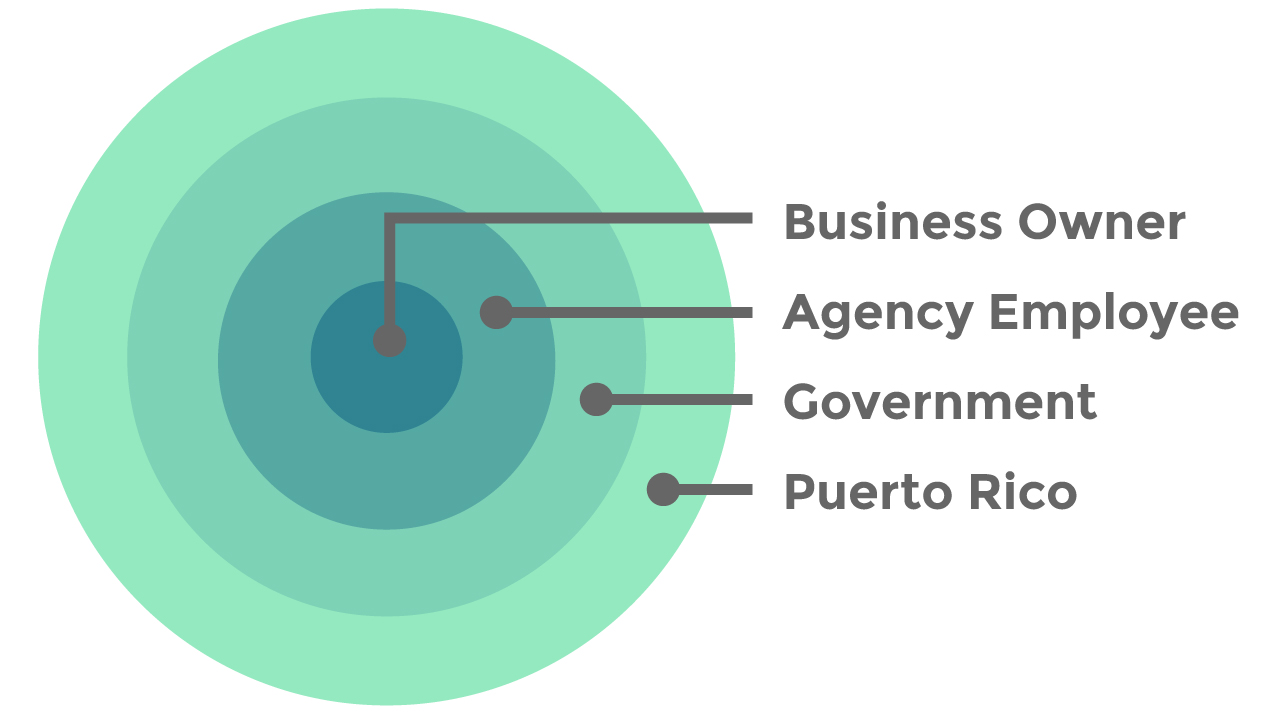
Our focus was on business owners exemplified by our UX persona “Mario”
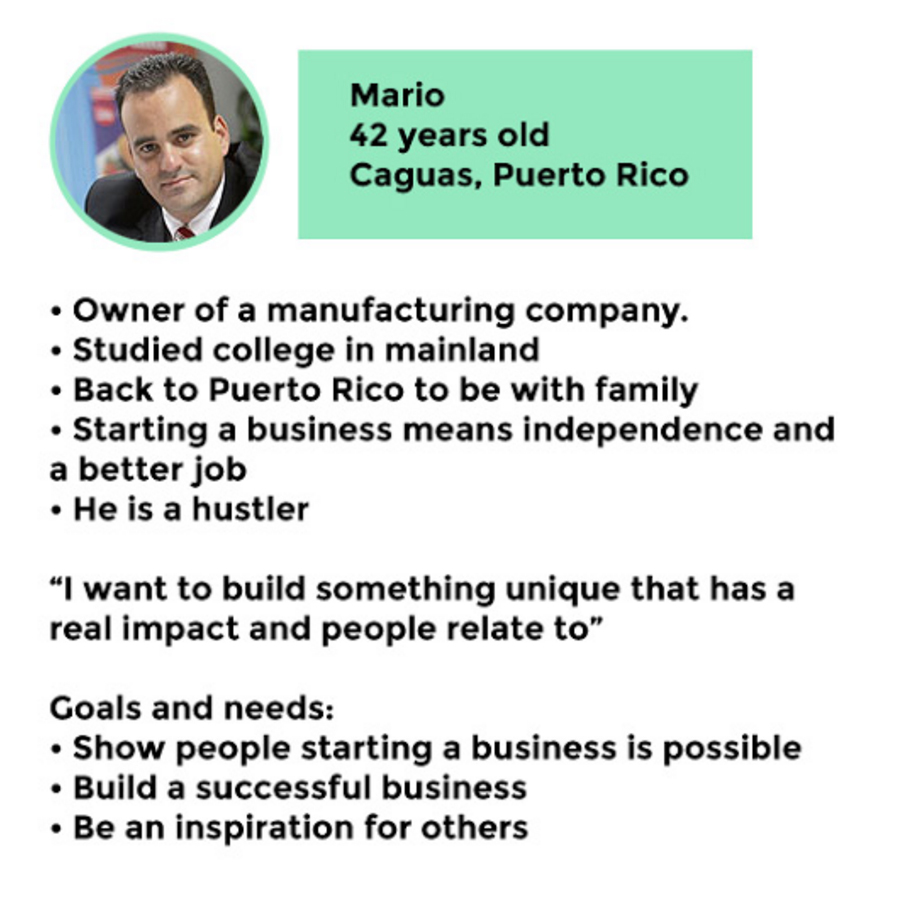
Once we defined our user, we were able to start designing toward their needs and pain points.
The main pain points we identified were:
1. They did not know where to find information about incentives to support their businesses.
2. If they did attempt to take advantage of any government incentive programs, often the bureaucracy of the process was difficult and discouraging to navigate.
3. Complex Legal System: The legal system is an adopted mixture of Spanish, United States, and unique Puerto Rican laws and regulations.
4. They needed money and banks weren't giving them loans.
Given this, we decided that the MVP (Minimum Viable Product) we wanted to build was a streamlined search process that delivers real, customized report of incentives available to a specific business owner. We started designing in March, and by May we had completed a prototype. Once deployed we were able to share this prototype with users and stakeholders, in order to capture their feedback.
Once we were ready, we decided to launch a pilot program with two government agencies focused on economic development. We also involved two banks and a single municipality. By starting with this small pilot we were able to learn before attempting territory-wide adoption.
As we moved forward with design and production of our MVP we maintained our validation efforts continuously as we made changes to the product. This helped us stay on track to reach our target of building desirable, feasible and viable solution to real problems.
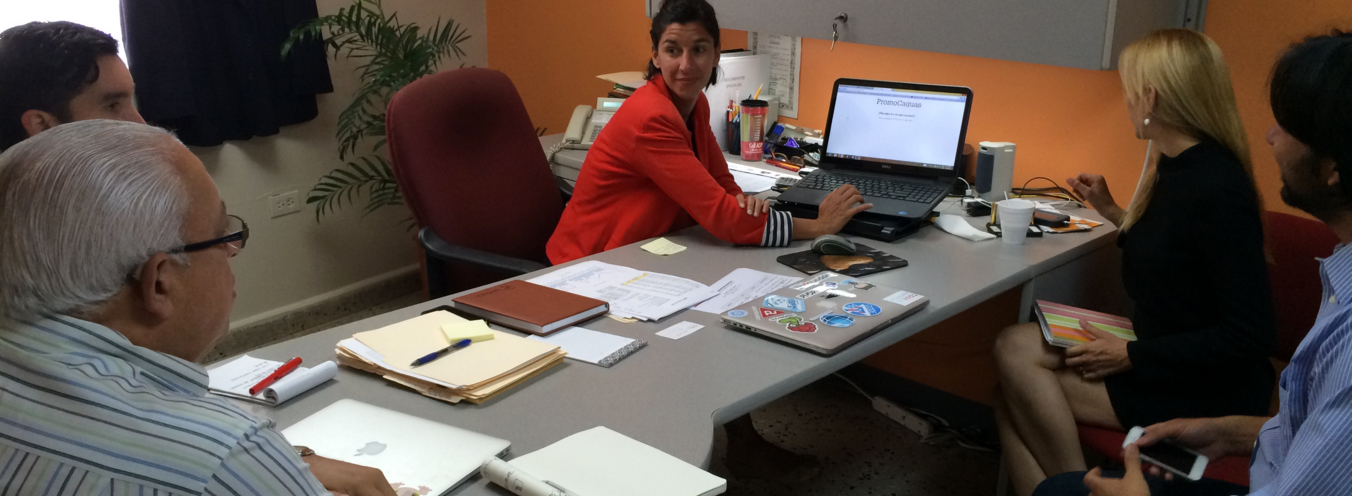
Showing PrimerPeso to government employees in Caguas, one of the first municipalities to adopt.
1. The three fellows and our city partner had come together to form an effective team.
2. We had established strong relationships with our collaborators in Puerto Rico.
3. Our research efforts paid off with critical insights and validated assumptions.
4. The ideation process had generated multiple viable project options.
5. We had validated our assumptions and improved our designs via user testing with our partners and customers. The value proposition was clear to all parties, including our stakeholders in the government agencies as well as the business owners seeking their assistance.
6. PrimerPeso.org had been fully designed and launched with real users.
7. Our project attracted attention in the Puerto Rican business press, and business community.
8. Overall it encouraged our stakeholders to make their practices more open and transparent.
9. Code for America is redeploying PrimerPeso in several other cities across the US.
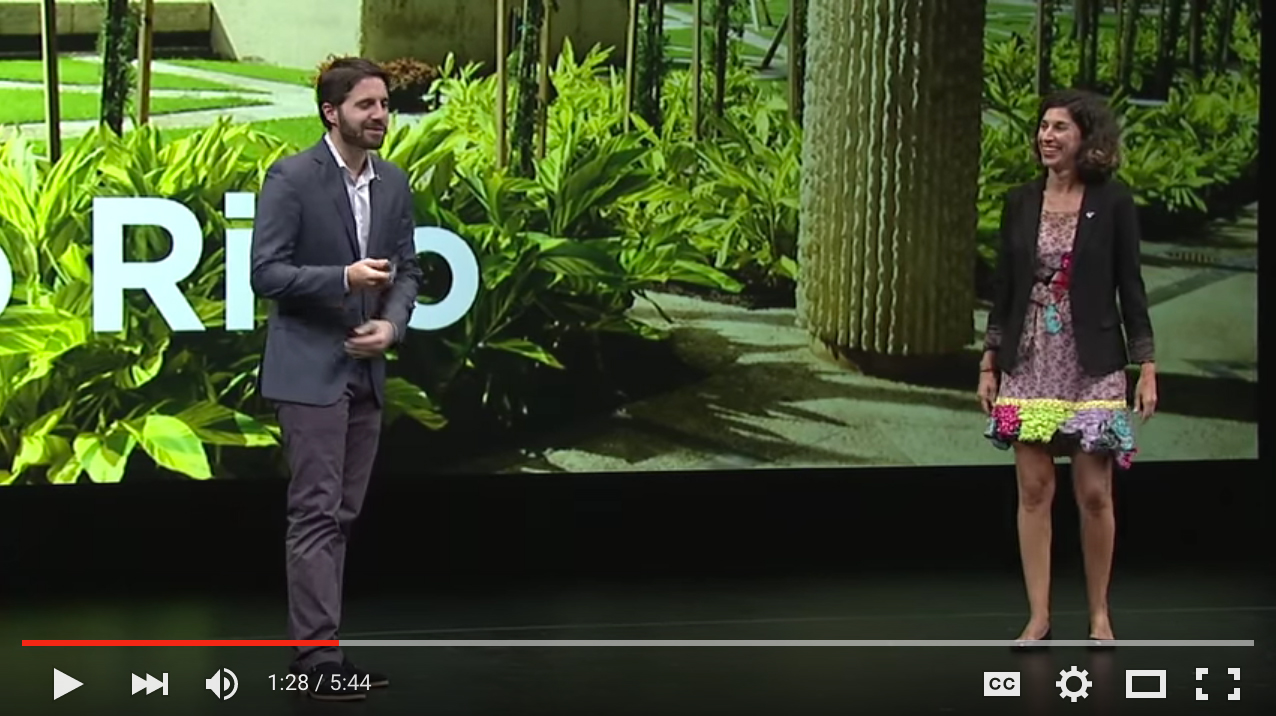
Giancarlo and myself presenting at the Code for America Summit
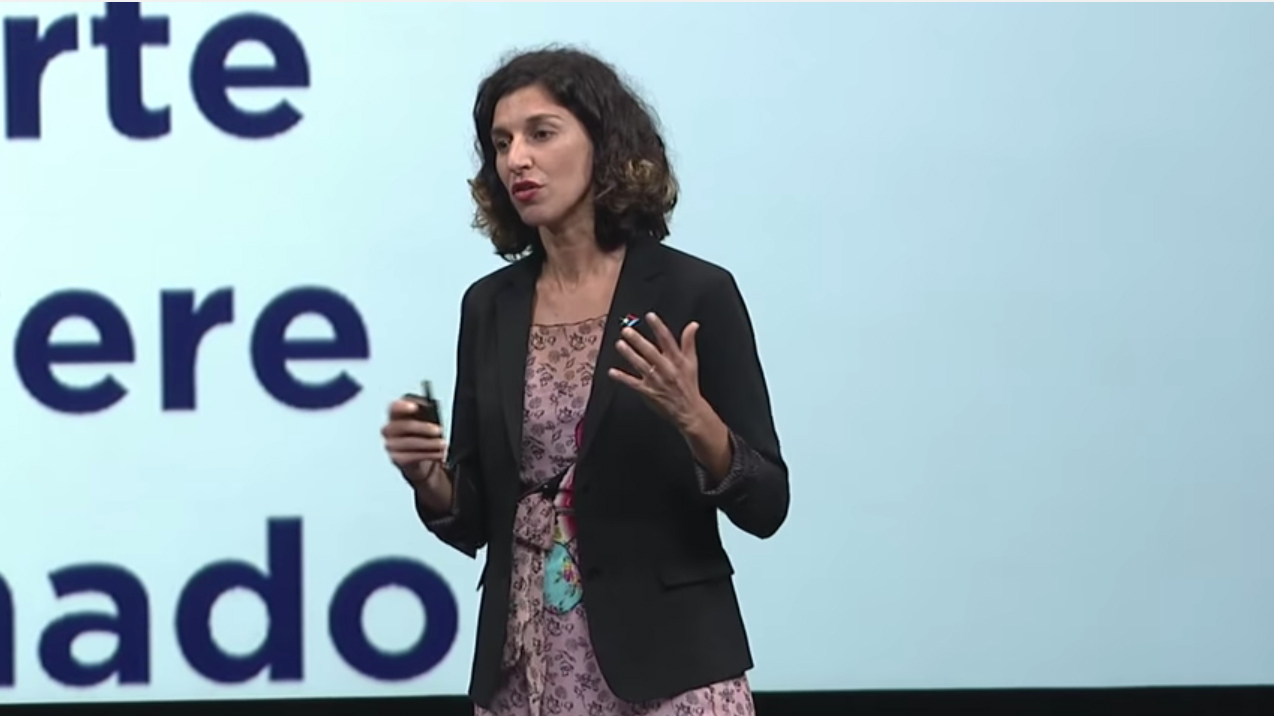
Video of “Fellowship Spotlight: Puerto Rico” from the Code for America Summit
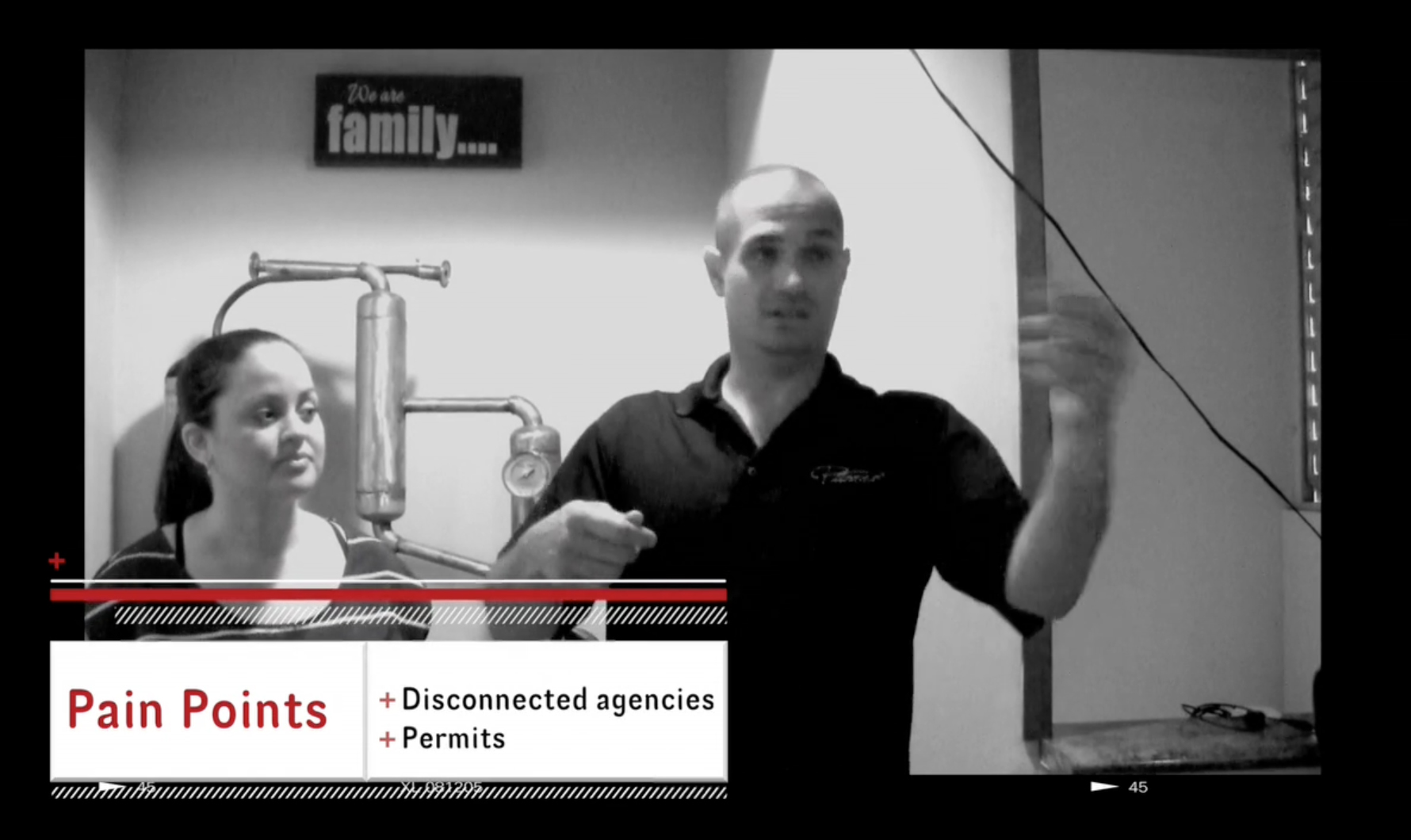
Video interview with Maria & Hector of “Destileria Coqui”, a small Pitorro distillery in Puerto Rico

Video interview with Arturo Lopez at his small farm “Huerto Isleño”
"PrimerPeso is a very friendly application and it provides you with what you need to get finance (…) people don’t know about what is available (…)I wish it would have existed three years ago” - Arturo Lopez, founder of Huerto isleño.
Your Shot - National Geographic
Jobs-to-be-done
JSK -Stanford
Research & UX Design